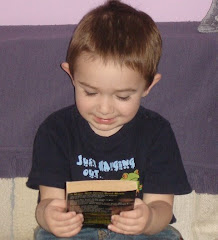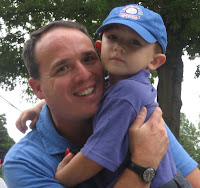 Pop superstar Bruce Hornsby and country legend Ricky
Skaggs, two artists with more hit singles, awards, accolades and nods from fans
and contemporaries alike are set to descend upon the stage of the Paramount in Huntington on the 20th
and while it may seem at first to be a most unusual pairing, It is not as far
fetched as it appears.
Pop superstar Bruce Hornsby and country legend Ricky
Skaggs, two artists with more hit singles, awards, accolades and nods from fans
and contemporaries alike are set to descend upon the stage of the Paramount in Huntington on the 20th
and while it may seem at first to be a most unusual pairing, It is not as far
fetched as it appears.
In the 1980’s, Ricky Skaggs set the
bar early on with an impressive string of #1 hits including the iconic Country Boy, while on the pop charts
Bruce Hornsby’s The Way It Is became
the most played record of 1987 and sent his debut album multi-platinum.
“Bruce and I met while he was at the top of his game
in the pop field and I was at the top of mine in the country field,” recalls
Skaggs. “We were on the same bill at a festival in upstate New York and at the end of my show he
introduced himself and asked me to sit in for a couple of songs during his set.
Fast forward a few years, I find this CD that Bruce had done called Hothouse, and on the cover was a
caricature of Bill Monroe and Charlie Parker. I just thought, man, what a funny
mind to put together this kind of dream band that you know he would have loved
to have played with.”
Skaggs was busily gathering artists at that time to
perform on a tribute album to the great father
of bluegrass, Bill Monroe.
“Bruce was the first guy to say yes. He showed up in
the studio and jumped right in with me and my band and it was effortless. I
remember listening to the playback in the control room and I turned to him and
said, ‘hey, if you’re ever up for doing a
whole record like this, I sure would be as well.’”
 That dream reached fruition with the 2007 CD release,
Bruce Hornsby & Ricky Skaggs,
which led to a subsequent tour.
That dream reached fruition with the 2007 CD release,
Bruce Hornsby & Ricky Skaggs,
which led to a subsequent tour.
“A while ago I went back and listened to a number of
shows that we had recorded during that time,” Hornsby remembers. “I was so
excited by the quality and energy of the performances that I sent some roughs
to Ricky, who was equally excited and together we decided to put it out.”
 In August, the duo released Cluck Ol’ Hen, a compilation of
twenty-one live cuts from their 2007-2008 tour. Skaggs talks about the process
involved in choosing the tunes for the new album.
In August, the duo released Cluck Ol’ Hen, a compilation of
twenty-one live cuts from their 2007-2008 tour. Skaggs talks about the process
involved in choosing the tunes for the new album.
“Obviously we wanted the best
performances that we could find from the whole band, but we also wanted
performances that weren’t on the original studio record. If you listen to that record it’s really more Hornsbyesque than it is bluegrass. It
was our first time in the studio to really put this thing together and we
didn’t know exactly what we were going to be doing, but when it got to the live
show we started adding more Bill Monroe music, more hard driving bluegrass, so
we kind of just made our decisions based on what we felt like would really make good listening.”
Hornsby and Skaggs have taken to the road once again
and while the evening set lists may remain more or less intact, the musical
arrangements are in a constant state of flux, offering a new and very different
experience at every show.
“We’re
having a ball,” Skaggs laughs. “Bruce loves to mix stuff up. Just the other
night I was a little out of tune and kind of touching up some strings on the
mandolin and it sounded almost like this exotic riff. Well, that’s all it took.
We just started jamming on something and made this weird kind of a Middle
Eastern -- it actually came out more Middle Eastern Kentucky I guess than anything
else -- but we loved it and that’s the thing about playing with Bruce. He loves
music, he loves to experiment with music and he’s always pushing the boundaries
for himself.”
 Hornsby
concurs that as this journey they began so long ago continues to evolve, the
respect the two have found in each other as artists follows along the very same
path.
Hornsby
concurs that as this journey they began so long ago continues to evolve, the
respect the two have found in each other as artists follows along the very same
path.
“Ricky
is a very open-minded musician, interested in a broad range of music. It was
never a challenge collaborating with him. I don't do just one thing, and
neither does he, so it's easy to explore a lot of musical areas together.
He also generates some of the best mandolin chops I’ve ever heard.”
Currently
in its second month, the tour has traversed a large expanse of the country with
dates being added that will see Skaggs and Hornsby performing together well
into 2014.
 “We’re taking Bluegrass
to places it hasn’t been before," Skaggs says elatedly. "When we’re on stage there
is nowhere else that either of us would rather be. The music that we’re making
now is music that I honestly believe people will be listening to 50 years from now, and thinking that it
was cool enough that they’ll draw some inspiration from it.”
“We’re taking Bluegrass
to places it hasn’t been before," Skaggs says elatedly. "When we’re on stage there
is nowhere else that either of us would rather be. The music that we’re making
now is music that I honestly believe people will be listening to 50 years from now, and thinking that it
was cool enough that they’ll draw some inspiration from it.”



















